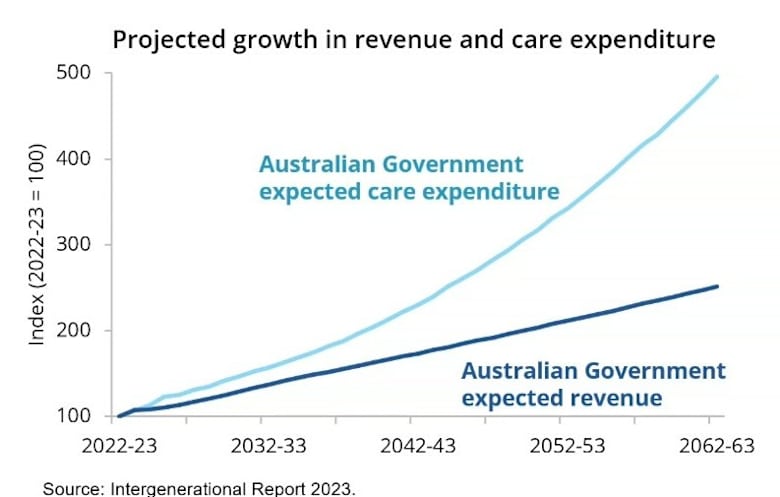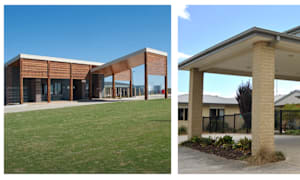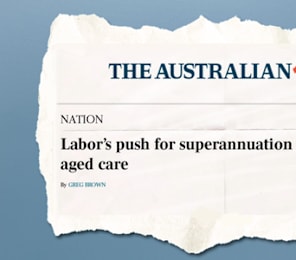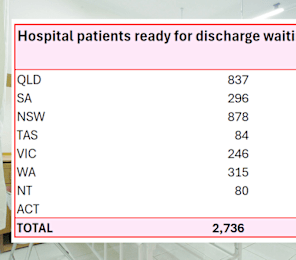The Productivity Commission delivered a blunt warning last Friday: care costs are set to swamp Government budgets.
Its fifth and final interim report ‘Delivering quality care efficiently’ – released last week ahead of the Government’s Economic Reform Roundtable which wraps up today in Canberra – confirmed what everyone in the sector already knows – demand is exploding, revenue isn’t keeping up, and the system is cracking under the weight.
The facts speak for themselves – see the slide above from the Productivity Commission’s webinar on the interim report’s release.
The care economy already eats 8% of GDP and 12% of the workforce. Yet costs keep rising faster than funding. In other words, we’re delivering more than Governments are willing to pay for.
Worse, the system is a mess of silos – aged care, health, disability, veterans care, hospitals – all duplicating effort, driving up costs and driving smaller providers out.
What’s the fix?
The Commission points to three levers:
-
Strip out duplication by aligning regulation.
-
Push collaborative commissioning to keep people out of hospital – as Whiddon is showing with its Collaborative Health Care Initiative.
-
And the big one: prevention.
Prevention is the game-changer – and Australia is failing badly.
We spend just 2% of health dollars on prevention, or 0.2% of GDP. The UK, Canada, Finland all spend at least double – see below.
This isn’t just about health. Prevention is an economic strategy. Spend today to stop chronic disease, homelessness and maltreatment tomorrow, and you save billions across multiple budgets.
But because those savings fall in different silos – state vs Commonwealth, health vs social security – most good programs never see the light of day.
The Commission’s answer?
A national prevention framework, backed by an independent board to force long-term investment.
It’s the right idea. But it’s slow. And time is exactly what we don’t have.
The Intergenerational Report shows care spending will blow out from 6.2% of GDP in 2022-23 to 10.8% by 2062-63. Without prevention, that curve becomes a cliff.
Denmark saw this coming back in 1987. It mandated ageing assessments at 75 and wellness programs at 82 – embedding prevention into policy. If they could do it nearly 40 years ago, why can’t we?
The Commission is right: we need the architecture. But let’s be clear – care costs are already rising, the water is at our necks, and waiting another decade to act is a death sentence for the system.
That’s why Plan T – Transformation – must be seized as the system’s lifesaver. We need to cut through regulation, rebuild efficiency, and make prevention central to policy.
The time to move is now.
Submissions on the Productivity Commission’s interim reports close 15 September.










